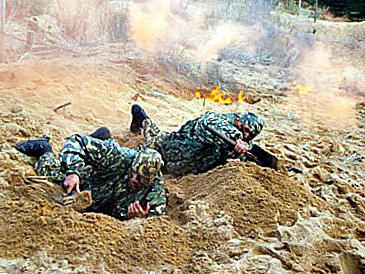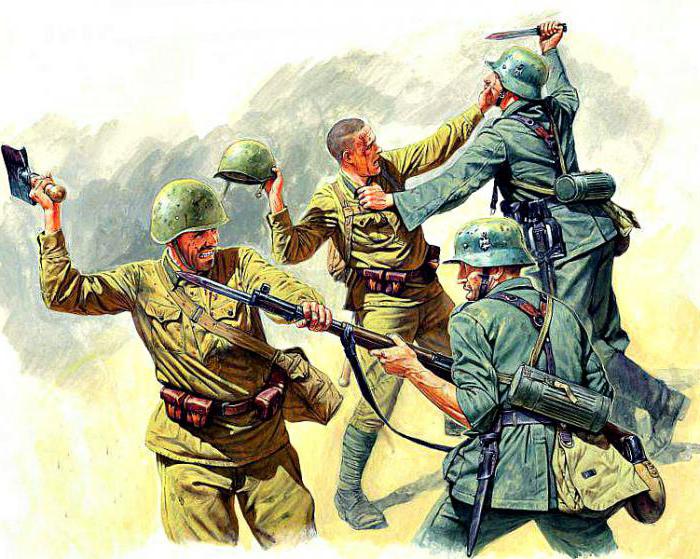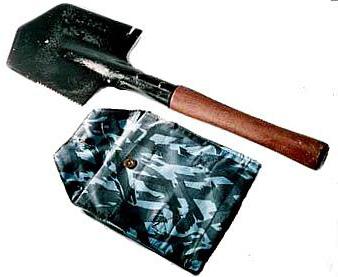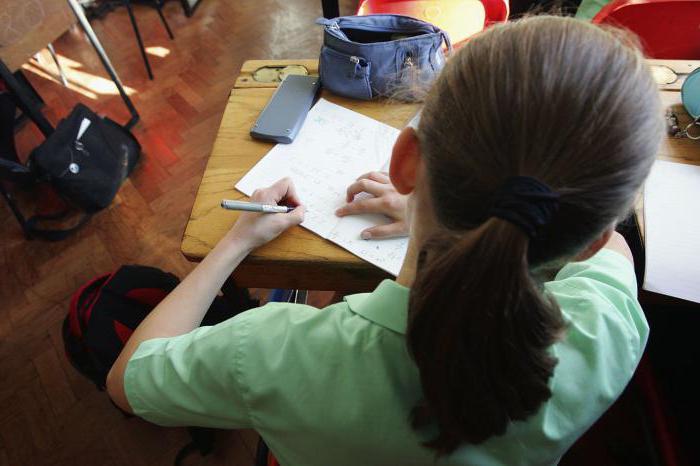MPL-50 - the most reliable friend of a soldier
MPL-50 - what is hidden under this abbreviation,knows most of the people who are serving or who once served in the army, for the rest it is only a set of letters. But the phrase "sapper shovel" is known to everyone, probably. And mean by this name, that is not knowing, it is MPL-50.

"Sapper" shovel for infantry
MPL - M-small, P-infantry, L-shovel, and the figure 50implies a total length of the tool, equal to 50 cm. It is the infantry shovel, and not at all sapper, as it is mistakenly called in the people. In this regard, it is worth noting that the arsenal in the Russian army as a trench tool is a shovel BSL-110 - a sapper shovel, only a large one. A small sapper shovel simply does not exist.
A small infantry shovel has been serving in the Russian army for almost a century and a half and has become so familiar to the soldier that many believe that she was born in Russia, but this is not so.
When the MPL appeared
In the mid-19th century, progress in developmentThe firearm made me think about the protection of infantry soldiers. The solution to this problem was simple and reliable. And it consisted of a small shovel, invented by the Danish military, the infantry captain Linnemann. The patent for the invention of the military was received in 1869, and in 1870 the Danes have already adopted it in the army.

The novelty soon found its place in otherEuropean armies. But before it was subjected to all sorts of tests, which it adequately passed, and in the performance index lost only one third of a large sapper shovel, while much surpassing it in compactness and versatility.
Armed with the Russian army, the Linnemann shovelaccepted in 1874. Over time, it was modified, the material of manufacture, the sizes varied, but as a whole the design remained almost identical to the original. In this form, the shovel has come down to our days as an individual wearable engineering tool soldier.
Construction of MPL
A steel bayonet and a wooden shank are two components of the MPL-50. Everything is extremely simple, but even these two details are thought out to the last detail.
The handle (handle, handle, holder) is ground fromhardwood. Carefully processed and not dyed. After processing, the surface of the cuttings remains slightly rough, after which it is burned and processed with a sanding cloth. As a result, you get a holder that does not slip in your hands and does not rub your calluses with skill.
The shape of the MPL bayonet can be 4- and 5-coal,sometimes there are also oval. The MPL-50 shovel has a steel pentagonal bayonet with a width of 15 cm, a length of 18 cm, coated with anti-glare paint. The blade is sharpened on one side. This method of grinding helps to easily cut the roots and generally makes it easier to dig trenches.

A small infantry shovel is worn in a special case, usually made of a dense tarpaulin. On its back surface there are two loops for fastening the tool to the waist belt.
Application of MPL-50
Naturally, the main purpose of MPLis to dig trenches. The shovel length of 50 cm was chosen not accidentally. Thanks to such sizes and designs, it becomes possible to self-scramble the fighter from various positions: lying, sitting or kneeling, depending on the emerging combat situation. The soldier, who has the skill of working with a shovel, digs out the trench for shooting from the lying position for 8-12 minutes. The rookie copes with this task on average for half an hour. Such results underscore the importance of training young soldiers for MPL, since in real combat even a small delay in time can cost them their lives.
The use of MPL as a cold weaponknown since the First World War. Especially for hand-to-hand combat, the bayonet shovel was sharpened from all sides, turning the engineering tool into a dangerous, two-edged and yet compact ax.

Moreover, the balancing of MPL-50 is performed in such a wayin the way that it is perfectly suitable for throwing. Since the shovel exceeds the throwing knife by its weight and size, it leaves the most severe consequences after reaching the live target.
Soldiers' wit found a small infantry shovel andquite peaceful application. In the field, it is often used as a frying pan for heating food. And when overcoming water obstacles on improvised boats (logs, rafts, etc.) - as an oar.
New-old "sapper"
Up to now, the "sapper" has livedHowever, the NGO of Special Materials, formed on the basis of the Central Research Institute of Materials of the Ministry of Defense of Industry of the USSR in 1991, produced a new model MPL-50, called "Azart-M".
When you look at this shovel, it seems that the manufacturer has tried to make the most versatile tool out of it.

Made of armor steel bayonet shovelThe designers were additionally equipped with a saw, ruler, nail and even a protractor. In addition, the bayonet of the new shovel now has the property of self-sharpening in the course of the work. Otherwise, the new "Azart-M" remained an old model of MPL-50.








